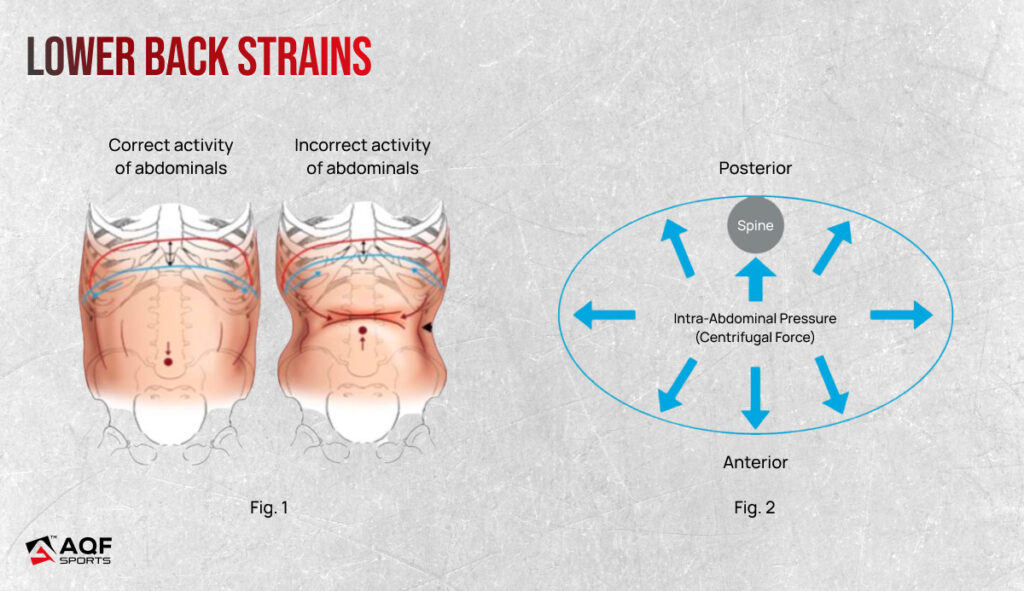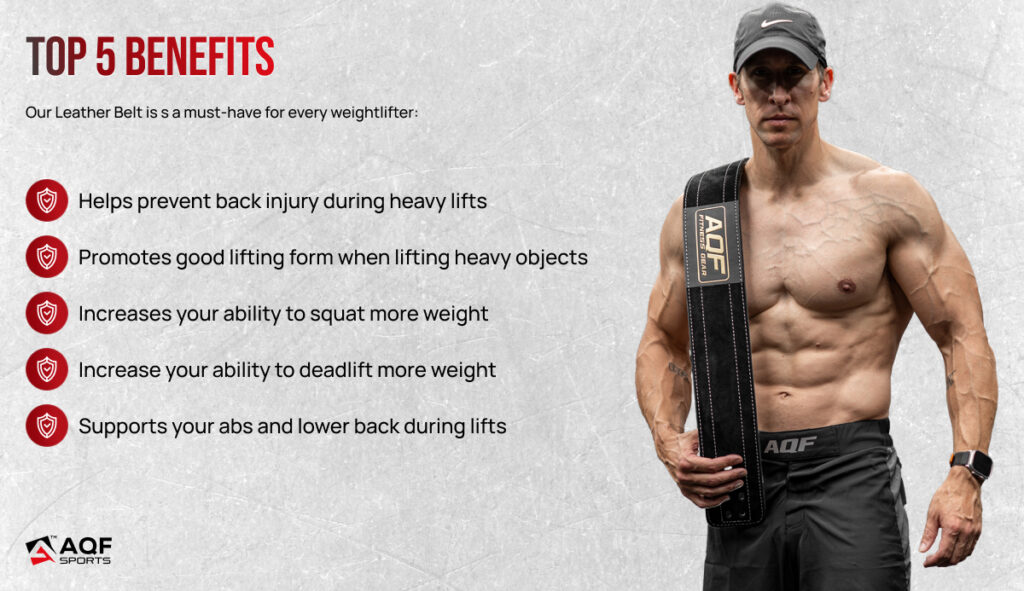Do Weightlifting Belts Prevent Injuries?

Should you wear a weightlifting belt to prevent injuries during heavy lifting? Weightlifting belts compress your spine and abdomen to increase intra-abdominal pressure. Increased ICP supports and stabilises your spine during heavy lifting. As a result, weight lifting belts, by virtue of increased intra-abdominal pressure, protect your spine, internal organs and stabilise your joints to prevent lower back injuries.
Weightlifting Belts Prevent Common Injuries
Lower Back Strains:
Overextension or sudden movements during weightlifting strain the muscles or ligaments in the lower back.
Weightlifting belts increase intra-abdominal pressure, supporting the spine and potentially reducing the risk of lower back injuries during heavy lifts [1].
Increased IAP stabilizes the spine and reduces excessive stress on the lower back during heavy lifts like deadlifts.
Suggested Read: 2 Minute Back Warm-Up Exercises to Crank Up the Muscle Heat

Shoulder Injuries:
Rotator cuff strains or tears occur due to repetitive overhead movements or improper form.
Research shows that core stability improves shoulder stabilization during exercises [2].
While weightlifting belts primarily aid the lower back, maintaining core stability can indirectly assist in better posture and form, potentially reducing the risk of shoulder injuries by promoting overall stability.
Suggested Read: 15 Shoulder Exercises for Sculpting your Upper Body Muscles
Knee Strains:
Knee injuries often happen due to improper alignment during squats or lunges, leading to strains or ligament damage.
Exercise improves core stability which correlates with improves lower limb alignment and reduces risk of knee injuries [3].
Weightlifting belts emphasise maintaining proper form by encouraging core engagement. This can indirectly aid in maintaining proper knee alignment, reducing the risk of strains by promoting better overall technique.
Wrist Injuries:
Inadequate wrist support during heavy lifts like bench presses or cleans can result in strains or sprains.
Weightlifting belts improve overall form and stability, potentially reducing the chances of wrist injuries by encouraging proper weight distribution and control.
Abdominal Hernias:
Excessive straining without proper core support can lead to abdominal hernias.
Weightlifting lever belts, when worn correctly, increase intra-abdominal pressure, potentially reducing the risk of hernias by providing support to the abdominal wall during heavy lifting.

Weightlifting Belts and Injury Prevention – FAQs
What is a lever belt used for in the gym?
A lever belt is used to provide firm support and stability to the core and lower back during heavy weightlifting exercises like squats and deadlifts.
What is the purpose of a belt in the gym?
The primary purpose of a weightlifting belt is to increase intra-abdominal pressure, aiding in spinal support and potentially reducing stress on the lower back during heavy lifting.
How does a lifting belt prevent injury?
A lifting belt doesn’t directly prevent injury but supports the core, increasing stability and reducing excessive stress on the lower back, potentially lowering the risk of certain injuries during heavy lifts.
Why do people use a lever belt?
People prefer lever belts for their quick and secure fastening mechanism, offering consistent and easily adjustable support during weightlifting sessions.
Do belts reduce injury?
Weightlifting belts can potentially reduce the risk of certain injuries, particularly lower back strains, by supporting proper form and core stability during heavy lifts.
Does a lifting belt protect you?
While lifting belts provide support and stability, they don’t offer complete protection against injuries. They are a tool to assist in maintaining proper form and reducing the risk of specific weight lifting-related injuries when used correctly.
Final Verdict
Weightlifting belts support your spine and potentially reduce the risk of lower back injuries during heavy lifting. Lifting belts are useful in injury prevention when you follow proper technique and progress gradually.
Discover More Topics
- The 7 Best Back Exercises to Strengthen Back Muscles
- Weightlifting Belt for Beginners: Complete Guide
- The Common Weightlifting Belt Mistakes You Must Avoid for Better Results
- Leather vs Nylon Lifting Belt! How to Choose the Right One?
References:
[1] Effects of a belt on intra-abdominal pressure during weight lifting





